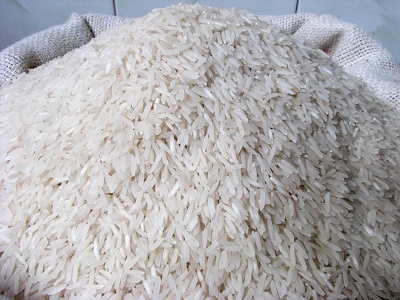News
Thailand’s Rice Export To Nigeria Drops By 91%
Nigeria is beginning to enjoy self-sustainability in rice production as it cuts importation from other countries to encourage local production.
Against the backdrop of the Central Bank of Nigeria’s policy of zero allocation of dollars for the importation of 41 items, including rice; import of rice from Thailand to Nigeria dropped from 1.23 million metric tonnes in 2014 to 23,192 metric tonnes as at November 2017.

According to data on the Thai Rice Exporters Association website, the value of these exports also dropped to 324 million Thai baht (from 8.2 billion Thai Bhat).
Thailand’s rice export to Nigeria (180 million people):
2014 — 1,239,810 metric tonnes2015 — 644,1312016 — 58,2602017 — 23,197
At this rate, by 2020 Nigeria will be exporting rice?
Thailand’s rice export to Benin (10.8 million people):
2015 — 805,7652016 — 1,427,0982017 — 1,647,387
Industry sources believe that the reduction in Nigeria’s importation trend was facilitated by the successful implementation of the Anchor Borrowers’ scheme of the Central Bank of Nigeria (CBN), from which many states had benefited.
He said: “We have got to get used to discipline and direction in economic management. The days of business, as usual, are numbered. Two years ago, I appealed to people to go back to the land. “I am highly gratified that agriculture has picked up, contributing to the government’s effort to restructure the economy.“Rice imports will stop this year. Local rice, fresher and more nutritious variants would be on our dishes from now on.”
According to Buhari:
“Great nations are built by enterprising people who turn their hands to anything that circumstances dictate.”
To intensify local production, Nigeria Incentive-Based Risk Sharing System for Agriculture (NIRSAL) is deploying an innovative nation-wide field structure to support 225,000 farmers under the CBN Anchor Borrowers Scheme.
Curiously though, Nigeria’s neighbours, Republic of Benin, recorded an astronomical increase in rice imports from Thailand, from 805,765 metric tonnes in 2015 to 1,647,387 million metric tonnes as at November 2017 — leading to suspicion that the drop in Nigeria’s import may not have to do with the claim by the Federal Government that the country now produces enough rice for domestic consumption, but the zero dollar allocation that has placed the burden of sourcing foreign exchange for the importation of the affected 41 items on the importer.
Meanwhile, Thailand is expected to have some 9.5 million tons of rice for export this year, a senior government official said.
The 9.5 million tons of the Thai rice will bring some 4.7 billion U.S. dollars in export value throughout 2018, according to acting Foreign Trade Department director-general Adul Chotinisakorn.
That compared to last year’s 11.48 million tons of the Thai rice which secured 5.1 billion U.S. dollars in export value, the acting department chief said.
However, Thailand has remained the world’s largest exporter of Hom Mali (fragrant jasmine) quality rice, he said.
The forecast drop in the export volume of the Thai rice would apparently result from unfavorable weather conditions and the government’s policy to cut down the overall producing volume for fear of oversupply to the world market.
Follow us on social media:-

 Biafra2 days ago
Biafra2 days ago“Simon Ekpa is not our member” – IPOB stated
-

 Celebrity Gossip & Gist2 days ago
Celebrity Gossip & Gist2 days ago“They don’t look so happy” – Reactions trail video of Chioma and Hailey at Davido’s concert
-

 Celebrity Gossip & Gist2 days ago
Celebrity Gossip & Gist2 days agoDiddy claims prosecutors showed judge edited Cassie video to make him look dangerous
-

 Celebrity Gossip & Gist2 days ago
Celebrity Gossip & Gist2 days ago“God is still in the business of doing wonders, please keep trusting God” – Emotional moment gospel singer Yinka Alaseyori serenades actress Dayo Amusa who gave birth to her first child at 41 years (Video)




